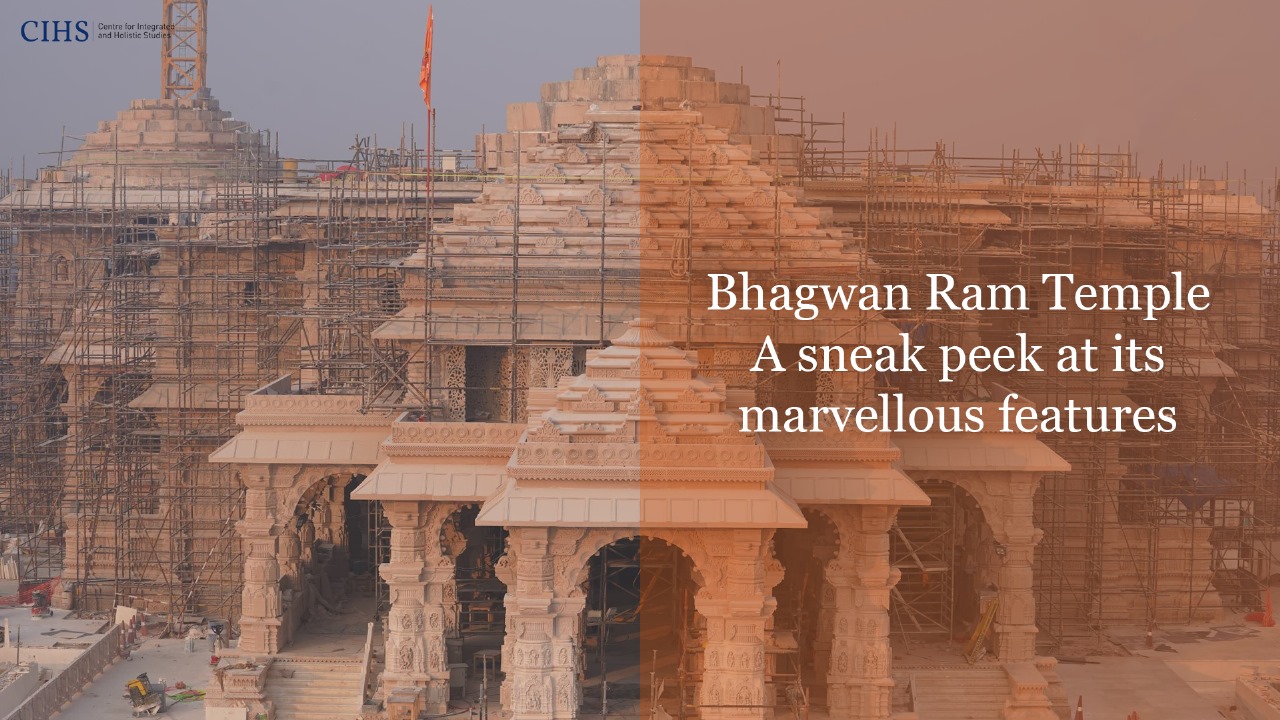
Bhagwan Ram Temple: A sneak peek at its marvellous features
As January 22 gets closer, the excitement of Bhagwan Ram worshipers is also intensifying. Individuals inside and outside the country look forward to the magnificent ceremony in Ayodhya as they identify themselves with Bhagwan Ram\’s values and principles. This much-anticipated Pran Pratistha ceremony is a religious emblem and a work of architectural and environmental excellence. Shri Ram Tirtha Kshetra Trust has unveiled a map of the 70-acre complex, providing enthusiasts with a full grasp of the precise planning that went into the temple\’s layout, architecture, and construction.

Architectural Marvel:
The temple\’s construction is designed carefully, considering ancient Indian architecture. Although the temple is grand in terms of area, it is also ready to guide coming generations by embracing the cultural heritage of India with equal grandeur.
The temple is a tall structure consisting of three floors, each measuring 20 feet in height, 250 feet in width, and 380 feet in length from east to west. The structure stands at a towering height of 161 feet and has a total of 392 pillars and 44 doors, all meticulously crafted in the old Nagara architectural style. Worshippers will enter the temple from the east, ascending 32 steps through the Singh Dwar (Gate), and will exit through the south side.
Significance of Percota:
Upon entering the temple, devotees will immediately sense a profound religious ambience. Every pillar and space within the temple has been meticulously designed with minute detailing, ensuring a spiritual experience for devotees.
With 732-metre-long and 14-feet-wide Percota, enhancing its aesthetic appeal, the temple\’s corners have been dedicated to the Sun God, Maa Bhagwati, Bhagwan Ganesha, and Bhagwan Shiv. A separate temple dedicated to Bhagwan Hanuman, who provided unwavering loyalty to Bhagwan Ram, will be situated in the northern side & another temple adorned with Mata Annapurna on the Southern side of the temple compound, with a touch of spiritual profundity.
Intricate inclusion within the complex:
The journey of becoming Maryada Purushottam Bhagwan Ram was not accomplished by sole efforts. According to the epic Ramayana, Bhagwan Ram\’s exile to the forest, abduction of Mata Sita, Ravana\’s death, and his return to Ayodhya after 14 years, he received invaluable assistance from numerous souls whose contribution remains indelible.
Accordingly, the primary temple complex would include temples devoted to Rishi Valmiki, Rishi Vashishtha, Rishi Vishwamitra, Rishi Agastya, King Nishad, Mata Shabari, and Mata Ahilya. This intricate inclusion pays homage to the rich fabric of Hindu history and spirituality.
Pilgrim facilities and environmental sustainability:
In addition to its role as a spiritual centre, the temple complex also holds significant cultural value for devotees of Bhagwan Ram. A convenience centre is being developed to facilitate the needs of all pilgrims visiting for Bhagwan Ram’s darshan. This centre will have the capacity to house the necessary belongings of 25 thousand pilgrims, assuring visitors a smooth and hassle-free experience. A hospital located on the premises offers medical treatment for health conditions.
Furthermore, the amenities encompass a spacious restroom facility, two sewage treatment plants, a water purification facility, and a dedicated electricity supply line. A fire brigade station is dedicated to maintaining stable groundwater levels by extracting water from an underground reservoir. This holistic approach to infrastructure development is linked to the vision of creating a sustainable and eco-friendly campus.
Cultural preservation:
The endeavour is commendable as the construction is completely focused on Indian culture and indigenous technology with strong emphasis on sustainable water conservation. The temple complex prominently showcases ancient trees, with 70 percent of the 70-acre space covered with lush greenery. This seamless traditional integration and contemporary elements establishes a model for future architectural endeavours.
Bhagwan Ram Temple in Ayodhya is not merely a religious structure but evidence of exceptional architectural competence, meticulous aesthetics, and an unwavering dedication to environmental sustainability. As the Pran Pratishtha approaches, the temple\’s unveiling will symbolise a significant spiritual milestone and showcase India\’s cultural legacy and commitment to a more sustainable and environmentally conscious future.

